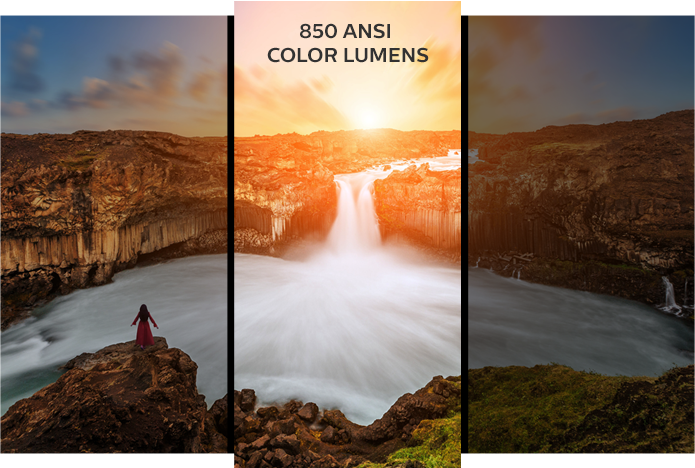erico
Advanced Member
Sounds like what I would be interested too.
They claim that the Nebra AnyBeam is about 150 ANSI Lumen bright.
Is that enough or much to low?
There apparently is a specification for a thing called Colour Light Output which is measured in lumens.
Wikipedia said:Projector output
ANSI lumens
The light output of projectors (including video projectors) is typically measured in lumens. A standardized procedure for testing projectors has been established by the American National Standards Institute, which involves averaging together several measurements taken at different positions.[14] For marketing purposes, the luminous flux of projectors that have been tested according to this procedure may be quoted in "ANSI lumens", to distinguish them from those tested by other methods. ANSI lumen measurements are in general more accurate than the other measurement techniques used in the projector industry.[15] This allows projectors to be more easily compared on the basis of their brightness specifications.
The method for measuring ANSI lumens is defined in the IT7.215 document which was created in 1992. First the projector is set up to display an image in a room at a temperature of 25 degrees Celsius. The brightness and contrast of the projector are adjusted so that on a full white field, it is possible to distinguish between a 5% screen area block of 95% peak white, and two identically sized 100% and 90% peak white boxes at the center of the white field. The light output is then measured on a full white field at nine specific locations around the screen and averaged. This average is then multiplied by the screen area to give the brightness of the projector in "ANSI lumens".[16]
Peak lumens
Peak lumens is a measure of light output normally used with CRT video projectors. The testing uses a test pattern typically at either 10 and 20 percent of the image area as white at the center of the screen, the rest as black. The light output is measured just in this center area. Limitations with CRT video projectors result in them producing greater brightness when just a fraction of the image content is at peak brightness. For example, the Sony VPH-G70Q CRT video projector produces 1200 "peak" lumens but just 200 ANSI lumens.[17]
Color light output
Brightness (white light output) measures the total amount of light projected in lumens. The color brightness specification Color Light Output measures red, green, and blue each on a nine-point grid, using the same approach as that used to measure brightness.


I watched that video and thought she did a decent job of showing the up-close quality of the projection as well as explaining for the uninitiated. She did include some shots onto the desk but yeah it could have done with some longer distance shots too.A thing that I can't understand about laser projection is how it behaves with distance... I mean, they tell there is no need for focus because their light beam is compact, but then when you move the projector away from a surface, the projected dimension is always the same ?
Or the size of the projected square becomes bigger, but you will see the components beams becoming distant from each others, like with some sort of scanlines ?
EDIT:
I found an unboxing video, but she project things only on her hand...

